People
Our team, past and present
Current

Dmitri “Mitya” Chklovskii is the group leader for the Neural Circuits and Algorithms group at the Flatiron Institute. He is also on the faculty of the NYU Medical Center. Before coming to the Simons Foundation in 2014, he was a group leader at Janelia Farm where he initiated and led a collaborative project that assembled the largest-at-the-time connectome, a comprehensive map of neural connections in the brain. Before that, he was an associate professor at Cold Spring Harbor Laboratory in New York, Sloan Fellow at the Salk Institute and Junior Fellow of the Harvard Society of Fellows. He holds a Ph.D. in physics from the Massachusetts Institute of Technology.

Alexander Genkin holds a Ph.D. in Computer Science from The Institute for Information Transmission Problems, Russian Academy of Sciences. His research focuses on learning and control in neuronal circuits.
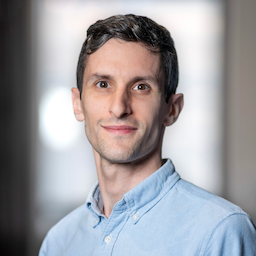
Philip Greengard is an Associate Research Scientist in the Neural Circuits and Algorithms group. His research is focused on using tools from applied mathematics and statistics to understand learning mechanisms in neuronal circuits. Prior to joining the Flatiron Institute, Philip was a postdoc at Columbia University where he worked primarily on computational and applied statistics. Philip has a Ph.D. in Applied Mathematics from Yale University.

Pat Gunn joined the Foundation in 2017 as a member of the Scientific Computing Core, focused on neuroscience projects. He maintains Caiman and handles infrastructure and software direction for the Miniwasp Connectomics project. Prior to coming here, he worked at Dropbox, MongoDB and Spotflux. Before that, he spent a decade as a member of the research staff at Carnegie Mellon University in Pittsburgh, where he successively worked in high-dimensional clustering, neuroscience and clustered operating systems research groups.
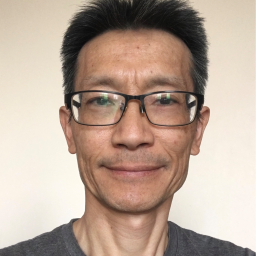
Chi-Yip Ho joined the group since 2018. He received his Ph.D. at Univ. of B.C. on structure-function studies related to mating pheromone of yeast, and his postdoctoral trainings at Univ. of California, San Francisco for Zebrafish heart development. Over the past two decades or so, he served as scientific director of multiple high-throughput core facilities at Mount Sinai Hospital/Univ. of Toronto, and at Univ. of Chicago; as CSO at Genvida HK Inc.; to develop state-of-the-arts methodologies and equipment for functional genomics. His recent focus is to accelerate advances in connectomics, particularly electron microscopy image analyses of nerve systems.
Kushal Kolar is a PhD student at NYU in Biomedical Engineering. He is working on algorithms for the analysis of voltage imaging and calcium imaging datasets, focussing on the challenges presented by newer datasets with higher temporal and spatial resolutions. He is also developer of fastplotlib, a new scientific plotting library that is capable of visualizing large neuroscience datasets: https://github.com/fastplotlib/fastplotlib
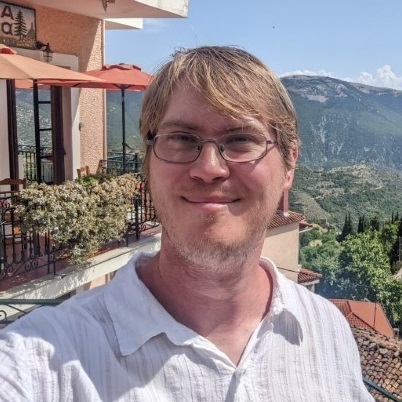
Jason is a Postdoctoral researcher co-advised by Mitya at the Flatiron and Jayeeta Basu at NYU School of Medicine. On the theory side, his work encompasses interpreting neural activity in the framework of control theory. On the experimental side, he records calcium activity from the dendrites of hippocampal neurons in behaving mice to probe the dendritic mechanisms of flexible memory. Jason graduated from UCLA with a PhD in neuroscience working with Mayank Mehta, where his thesis focused on dendritic and hippocampal coding properties underlying navigation. Outside of work, Jason is an active trumpet player in the L Train Brass Band, Brooklyn’s home-grown community brass band.
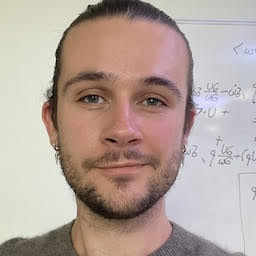
Josh is a Flatiron Research Fellow working with Mitya on a dynamical systems framework of neurons, with a particular focus on the reconstruction of a dynamics from sparse measurements, identification of independently evolving subsystems, and symmetry reduction. Josh recently graduated from Georgia Tech with a PhD in physics and MS in mathematics. Their dissertation explored extending the dynamical systems theory of Axiom-A chaos to fluid turbulence. Outside of work, Josh likes to go indoor bouldering, cycle, hang with friends, and do physics-for-fun.
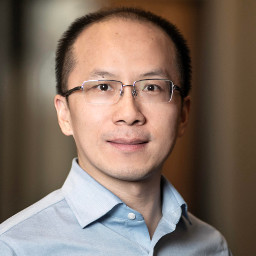
Shanshan Qin is an Associate Research Scientist in the Neural Circuits and Algorithms group. His current research focuses on developing theoretical frameworks to understand neurons and circuits at the algorithmic level. Prior to joining the Flatiron Institute in February 2024, he was a Postdoctoral Fellow at Harvard University. He holds a Ph.D. in Physics from Peking University, China.

Erik Schomburg joined the foundation near the end of 2023 as a research scientist to develop and maintain software for the Center for Computational Neuroscience. His current focus is on the automated segmentation and synapse detection for the Center’s insect connectomics projects. Prior to joining the Flatiron Institute, Erik worked as a data scientist and software engineer at several technology companies and startups. He holds a Ph.D. from the California Institute of Technology, where his dissertation focused on the biophysical and physiological generators of electric potentials in the brain.

Aya Shinomiya joined the Flatiron institute as a Research Analyst in August 2021. Aya is a member of the Neural Circuits and Algorithms Group in the Center for Computational Neuroscience. Prior to joining the foundation, she worked at HHMI’s Janelia Research Campus as a Research Technician.
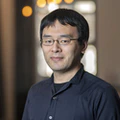
Kazunori Shinomiya is a Research Scientist in the Neural Circuits and Algorithms group working on the wasp brain connectome project. Before joining the team in August 2021, Kazunori worked on electron microscopy-based connectomics of the fruit fly brain in the FlyEM Project Team at HHMI’s Janelia Research Campus. He earned a PhD in Computational Biology from the University of Tokyo, Japan, contributing to a standard atlas and a nomenclature system of the insect brain using confocal laser scanning microscopy. He also worked as a postdoctoral researcher at Dalhousie University, Canada, on the neuroanatomy of the fly’s visual system.
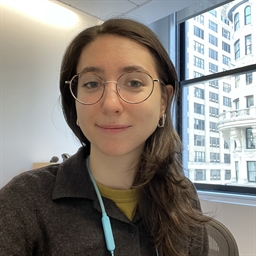
Pliny joined the Flatiron Institute in 2022 as an Associate Research Analyst at the Center for Computational Neuroscience (CCN). She has a background in visual arts and works on the connectome of Megaphragma, a parasitic wasp.
Past
Yanis Bahroun joined the Flatiron Institute as a Research Fellow in 2019.
Jules Berman is a Ph.D. student at NYU in Computer Science. He is interested in machine learning with scientific applications. His research at the Center of Computational Neuroscience was on extraction of connectomics data from Electron Microscopy images using machine learning techniques, looking at different ways to apply geometric deep learning methods to this problem.
Nicholas Chua joined the Foundation in 2017 as a member of Mitya’s Group, focused on the miniwasp brain connectome. In 2021 he started his PhD at Columbia University.
Ben Cohen worked in Mitya’s group from 2019 to 2021 on the wasp connectomics project.
Johannes Friedrich joined the Flatiron Institute as an Associate Research Scientist at the Center for Computational Neuroscience. His research focuses on efficient machine-learning and optimization algorithms for statistical analysis of large-scale neural data, as well as on theories of neural computation, such as implementations of machine learning algorithms in biologically realistic neural networks. Friedrich comes to the Simons Foundation from Columbia University, where he was a Postdoctoral Research Scientist in the Statistics Department and the Center for Theoretical Neuroscience. Prior to working at Columbia, he was a Postdoctoral Research Fellow at the University of Cambridge in the United Kingdom. He holds a Ph.D. in Natural Science from the University of Bern in Switzerland and an M.S. in Physics from the University of Würzburg in Germany.
Siavash Golkar joined the Flatiron Institute in 2019 in the Center for Computational Neuroscience. Prior to the Flatiron Institute, Siavash held post-doctoral positions at Cambridge University and New York University, working on solutions to fundamental machine learning problems such as transfer learning and forgetting. Siavash has a Ph.D. in theoretical physics from the University of Chicago where his research focused on geometric and topological considerations in effective field theories.
Cas joined the Flatiron Institute in 2022 as an Associate Research Analyst at the Center for Computational Neuroscience (CCN). She has a background in cognitive sciences and worked on the connectome of the Megaphragma, a parasitic wasp.
David Lipshutz joined the Flatiron Institute in 2019 as an Associated Research Scientist. Prior to coming here, he received his B.A. and Ph.D. in Mathematics from the University of California, San Diego, and held postdoctoral fellowships at Brown University and the Technion. His research interests are in computational neuroscience, and more specifically, in understanding the mathematical algorithms implemented by the brain.
Victor Minden worked in Mitya’s group from 2017 to 2018 on biologically plausible algorithms for dimensionality reduction of streaming data.
Deener Shefter worked in Mitya’s group from 2019 to 2022 on the wasp connectomics project.
Tiberiu Tesileanu joined the group in 2018. His research focuses on learning and normative models in neuroscience, particularly in relation to time series segmentation, motion detection, and dynamical system learning. Prior to the Flatiron, Tiberiu worked as a postdoctoral fellow at the CUNY Graduate Center, thinking about problems ranging from the dynamics of CRISPR in bacterial populations, to birdsong learning, to efficient coding in olfaction and vision. Before CUNY, Tiberiu was a member of the Institute for Advanced Study, studying statistical properties of protein alignments, and before that he got a Ph.D. in high-energy particle physics from Princeton University.
Myisha Thasin worked in Mitya’s group from 2018 to 2022 on the wasp connectomics project.
Eric Thomson is a visiting Data Scientist at CCN. He is a maintainer of Caiman, a calcium imaging analysis software package. His goal is to create software that is easy for scientists to learn, and that adapts with the development of new methods in optical physiology and software best practices. His other interests include sensory coding and motor control, especially in invertebrate systems.
Sonia Villani joined the Flatiron Institute in 2018. Sonia was a member of the Neural Circuits and Algorithms Group in the Center for Computational Neuroscience, as part of team reconstructing the connectome of Megaphragma, a parasitic wasp. Sonia is also an actor and holds an MA in Philosophy from La Sapienza University of Rome.
Charlie Windolf joined the Foundation in 2019 as a member of Mitya’s Group, doing machine learning for segmentation of the miniwasp brain. In 2020 he started his PhD at Columbia University.
Jingpeng joined the foundation in 2020 as an Associate Research Scientist to work on mapping neurons based on high-resolution Electron Microscopy images. Prior to coming here, Jingpeng was an Associate Research Scholar at Princeton University, where he worked on petabyte-scale neuron reconstruction based on Electron Microscopy images using Deep Learning and Cloud Computing technologies. Jingpeng has a doctoral degree in Biomedical Engineering from Huazhong University of Science and Technology in China. In pursuing his Ph.D., he worked on large scale neuron and blood vessel tracing based on Light Microscopy images of whole mouse brains.